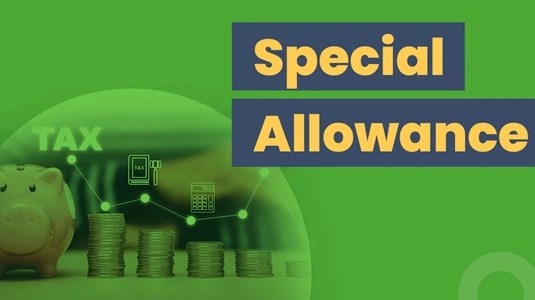See, when you receive that sweet notification of a salary deposit as an employee in India, it is not just simple numbers. Nah, instead, it is more of a mix of several components that each play a unique role in your earnings, you know? At the heart of it all is your basic salary, which is the main source of your income. And for example, a dearness allowance (DA) helps a lot of workers, especially those who work for the government or in the public sector, keep up with inflation and keep their buying power. Another benefit is the house rent allowance (HRA), which changes based on where you live and work and helps you pay your rent. The special allowance is the icing on the cake. The fact that this part is so flexible makes it pretty cool. It’s not tied to any particular costs like an HRA or DA is. Instead, it’s based on your job role, company policies, or even the specific needs of your work.

What Exactly is Special Allowance?
What does this special allowance have to do with anything? Well, it’s like an extra pay on top of your regular salary, and it’s made to fit different needs. When it comes to your salary, the special allowance is the wild card. How exactly? Well, HRA and transportation allowances are tied to specific costs. There are times when it changes to fit different needs, like when you have extra duties or are working in tough conditions. How much? Based on what’s written in your contract, that changes a lot from company to company and even between people in the same company.
Let’s Have A Bit Of Tax Talk, Shall We?
Now comes the less fun part: taxes, and with the recent Tax bracket changes, it is even more frustrating. Because of Section 10(14) of the Income Tax Act, special allowances in India are generally taxed unless they meet certain conditions that let them be tax-free. Some allowances, like transportation for work-related trips, get a tax break. But don’t get too used to this. Because of India’s new tax system, many of these exemptions no longer apply. This means that most special allowances are now taxed. That’s the very reason you will see a direct effect on your take-home pay and your total tax game because of this change.
How Is The Special Allowance Calculated, Anyway?
Figuring out your special allowance can be like solving a puzzle because it depends a lot on company policy and some secret talks. Many times, it’s worked out after your base salary and other stable parts of your pay, like DA and HRA, have been set. If you write down your total cost to company (CTC), and then set aside money for the fixed parts, what’s left could be called your special allowance. Simple as that. But keep in mind though, this very part of your CTC can be a big one, especially if your company likes to keep things soft.
Keeping Up With Regulations
A new part was added to the rules book about special allowances not long ago. A Supreme Court decision says that when you figure out how much to put into your provident fund (PF), your basic salary and any special allowances need to be added together. Why’s that though? Well, this move is meant to help you save more for retirement. It may mean less money in your current paycheck, but it will give you more golden years. The Wage Code 2022 also limits how crazy these allowances can be compared to your basic salary. This was done to make pay systems more fair for everyone, you know?